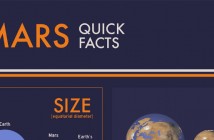The Earth’s moon is magnificent, especially when in it is on its full moon phase. When you are looking at the sky and see the moon, did you ever wonder how many moons does Mars have? Kids might be wondering the same thing and, they are most likely to do so if they have not been introduced to the subject. As an answer to how many moons does Mars have, all of the Solar System’s planets have moons. Some of the planets have plenty of moons, but the remaining ones either have one or two moons. Mars is one of the planets with two moons. These moons are Deimos and Phobos.
How Many Moons Does Mars Have?
The two Mars moons are thought to be ‘captured asteroids.’ It was discovered by Asaph Hill in the same year, 1977. The names of the moons were obtained from Greek mythology characters. Deimos and Photos were the two Greek mythology characters who accompanied Areas, the god of war as well as their father, into battle. Phobos means panic or fear and Deimos terror or dread. According to studies, Mars may have other moons that are smaller than 50 to 100 meters, and also a dust ring. However, none of these are discovered yet.
The Discovery of Phobos and Deimos
The Deimos moon was discovered by Hall on the twelfth of August 1877. The recorded time was about 7:48 UTC. Phobos was discovered on the eighteenth of August 1877 at the time of 9:14 GMT in Washington, D.C, specifically at the US Naval Observatory. The period of the discovery was also a time when Hall was searching for moons in Mars. Two days before the discovery of Phobos, Hall already found what appeared to be a moon on Mars. But he was not able to identify it because of a bad weather.
Phobos
The moon is stated to be one third as big as Earth’s moon when it is viewed from Mar’s surface close to its equator. Phobos has an angular diameter that measures between 8 inches – rising – and 14 inches – overhead. From the point of view of an observer, the moon would appear to be smaller if it is viewed from away Mars’ equator. If it is viewed from the polar icecaps, the moon would be completely invisible.
Considering the angular diameter of the Sun when viewed from Mars, solar eclipses on the planet do not occur. But the case is different with lunar eclipses since it is occurring almost every time the night comes.
Deimos
From an observer’s point of view, Deimos would look more like that of a bright star. But it would also appear a bit bigger when compared to Venus’ size when viewed from Earth. Just like Phobos, it also has an angular diameter, but it is only for about 2 inches.
The motions of the two moons are very different from Earth’s Moon. Phobos is rising in the west and setting in the east speedily. Deimos is rising in the east, but in a slow pace.



